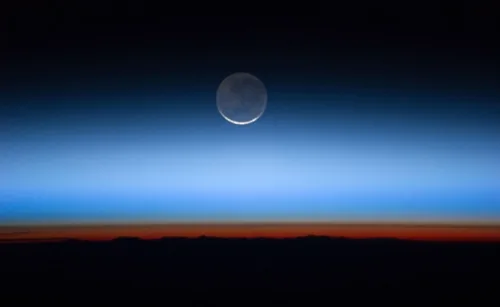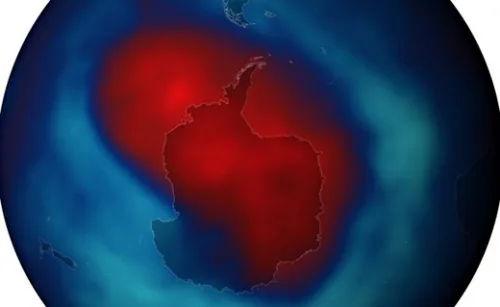News•March 15, 2014
New Ozone-Destroying Gases Found in the Atmosphere
By Damian Carrington, The Guardian
Dozens of mysterious ozone-destroying chemicals may be undermining the recovery of the giant ozone hole over Antarctica, researchers have revealed.
The chemicals, which are also extremely potent greenhouse gases, may be leaking from industrial plants or being used illegally, contravening the Montreal protocol which began banning the ozone destroyers in 1987. Scientists said the finding of the chemicals circulating in the atmosphere showed “ozone depletion is not yesterday's story.”
The newly discovered chemicals, which are also extremely potent greenhouse gases, may be leaking from industrial plants or being used illegally.
Credit: NASA Earth Observatory/Flickr

Until now, a total of 13 CFCs and HCFCs were known to destroy ozone and are controlled by the Montreal protocol, widely regarded as the world's most successful environmental law. But scientists have now identified and measured four previously unknown compounds and warned of the existence of many more.
“There are definitely more out there,” said Dr. Johannes Laube, at the University of East Anglia. “We have already picked up dozens more. They might well add up to dangerous levels, especially if we keep finding more.” Laube and his colleagues are in the process of fully analyzing the dozens of new compounds, but the work completed on the four new chemicals shows them to be very powerful destroyers of ozone.
Laube is particularly concerned that the atmospheric concentrations of two of the new compounds, while low now, are actually accelerating. “They are completely unimpressed by the Montreal protocol,” Laube told the Guardian. “There are quite a few loopholes in the protocol and we hope some of these are tightened. But the good news is that we have picked up these [four] early.” The chemicals take decades to break down in the atmosphere, meaning their impact on ozone and climate change is long-lived.
“This research highlights that ozone depletion is not yesterday's story,” said Professor Piers Forster, at the University of Leeds, who was not involved in the study. “The Montreal protocol – the most successful international environmental legislation in history – phased out ozone-depleting substances from 1987 and the ozone layer should recover by 2050. Nevertheless this paper reminds us we need to be vigilant and continually monitor the atmosphere for even small amounts of these gases creeping up.”
The new research, published the journal Nature Geoscience, analyzed air samples captured since the mid-1970s in several ways. Air bubbles trapped in snowpack in Greenland, samples taken by scientists in Tasmania and others collected by aircraft flying 13 miles above Europe were all analyzed. The team found three new CFCs and one HCFC, none of which had been identified before. “I was surprised no one had picked these up before,” said Laube. At least 74,000 metric tons of the four newly discovered chemicals have been emitted, the scientists estimate, although in the 1980s one million metric tons of other CFCs were pumped into the atmosphere every year.
The ozone hole reached its biggest extent for the year on September 26, 2013.
Credit: NOAA via The Guardian

Despite the production of all CFCs having been banned since 2010, the concentration of one – CFC113a – is rising at an accelerating rate. The source of the chemicals is a mystery but Laube suggests that CFC113a may be being used as a feedstock chemical in the production of agricultural pesticides. “But we can't rule out illegal sources,” he said.
CFCs and HCFCs were used mainly in refrigeration and aerosol sprays but, in 1985, scientists discovered the Antarctic ozone hole. It grew in size from almost nothing in 1979 to a peak of 26.6 million square kilometers in 2006. As the Montreal protocol has taken effect, it has recovered slowly, shrinking to 21.0m square kilometers in 2013. Ozone screens out harmful ultraviolet rays from sunlight that can cause cancer in humans, as well as damaging marine life, crops and animals.
“Although these new emissions [of the four chemicals] are small, for the Montreal protocol to continue to be successful it is necessary to understand whether it is being strictly complied with,” said Prof William Collins, at the University of Reading, and not part of the research team. “This study provides useful new information on policing the protocol, tracing sources of new CFCs that are possibly arising as the by-products of manufacturing other chemicals.”
In December, NASA researchers revealed the discovery of a new greenhouse gas that is 7,000 times more powerful than carbon dioxide at warming the Earth and which has been in use by the electrical industry since the mid-20th century. The four newly identified compounds are also expected to trap heat thousands of times more powerfully than CO2.
Reprinted from The Guardian with permission.